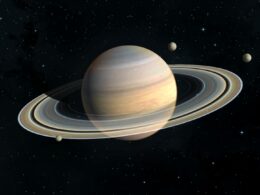How to observe Venus
The amateur astronomer will find it easy to observe Venus because it is the brightest object in the night sky after the Moon. It can gets bright as magnitude -4.7 — enough to cast a shadow — and is then even visible in daylight in crystal clear skies.
Viewed through a telescope, its moon-like pattern of phases can be seen, as first detected by Galileo in the 17th century. When Venus lies beyond the Sun, it shows a gibbous face but when at its brightest it displays a crescent shape which may be seen in binoculars. You can even see Venus in daylight.
Some amateurs have sketched subtle shadings in the atmosphere but there are not the striking details seen on other planets.
One phenomenon seen by various experienced observers is the so-called Ashen Light, a mysterious glowing of the dark part of the planet that is in shadow and should therefore be invisible. If the possibility of an illusion is discounted, then it has been suggested that this could be due to lightning in the continually raging thunderstorms. Others wonder if it is caused by volcanic eruptions or is perhaps a glow from the baking landscape.
Venus lies an average of 109 million km from the Sun and, from Earth, appears to venture as far as 47 degrees from it in the sky when at either its Eastern Elongation in the evening or Western Elongation in the morning. This means that, unlike Mercury, it may at times be seen shining in a dark sky.
Because Venus’s orbit is inclined slightly to our own, it usually passes above or below the solar disk when at inferior or superior conjunction. However, at rare intervals, Venus may be seen gliding across the Sun’s disk as a large black dot. This last happened on June 8, 2004, and June 6, 2012, and will not occur again for over a century!
Venus takes 224.7 days to complete one orbit of the Sun. But a final oddity is that its own day – the time it takes to spin on its axis – is 243 days and so longer than its year. It also rotates in the opposite direction to other planets in the solar system. Venus is a strange world indeed.
Like Mercury, Venus is closer to the Sun than we are, so never strays far enough to be seen at midnight.
Depending on its position in its orbit, Venus can appear as a morning star rising before the Sun or an evening star setting after it. And there are times when it is roughly in line with the Sun and so invisible to amateur astronomers.
But around what is called greatest elongation, Venus can set as much as three hours after the Sun or rise three hours before it – and it then shines like a dazzling beacon in a dark sky. It is bright enough for its reflection to be seen on water.
Because Venus is between us and the Sun, it shows phases like the Moon. When on the other side of the Sun it is a tiny disk but as it swings round to come between us and the Sun its phase changes through a ‘half moon’ to a slim but sizeable crescent.
A fine if dazzling sight in the smallest of telescopes. Venus used to be considered the Earth’s twin. It is similar in size and another rocky world but conditions on the surface are hellish with acid rain and scorching temperatures – quite different to those on our world.
Venus is permanently shrouded in cloud so what we know of its surface comes from radar observations and a couple of Russian probes that sent back some data before being destroyed by the heat. Read more about this hellish world in our special article.
★ Keep up with space news and observing tips. Click here to sign up for alerts to our latest reports. No spam ever – we promise!

